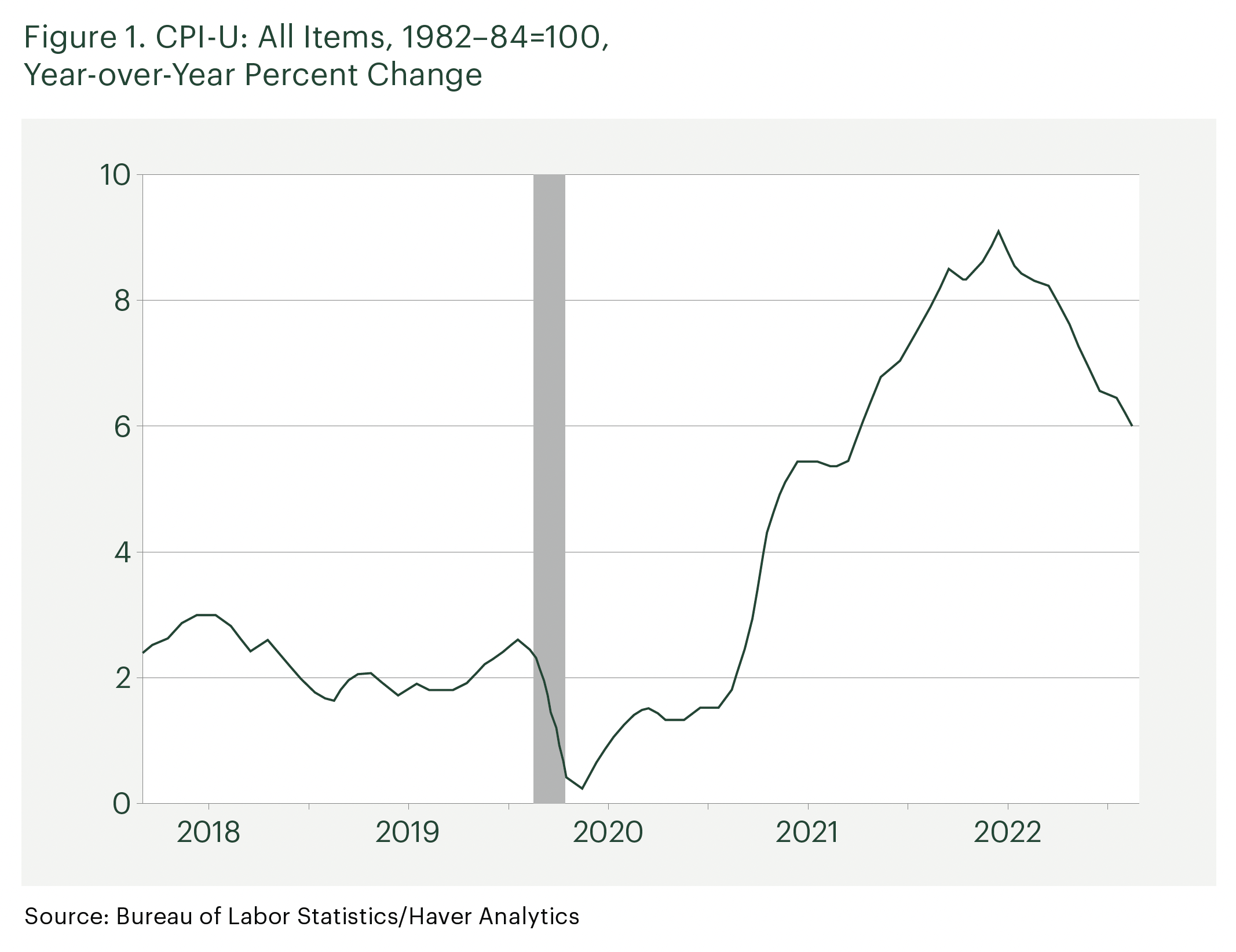Market highlights:
- March results helped all three major U.S. indices end the first quarter of 2023 in the green.
- Despite mid-March market turbulence caused by strain on the banking industry, economic updates continued to show positive signs of growth.
- Concerns about the debt ceiling and a government default lingered during the quarter.
Markets rebound in March
Markets had a solid March, as a month-end rally helped bring all three major U.S. indices into positive territory for the month. The S&P 500 gained 3.67 percent while the Dow Jones Industrial Average (DJIA) increased 2.08 percent and the Nasdaq Composite notched a 6.78 percent gain. March results helped offset weakness in February and all three indices ended the quarter in the green. The S&P 500, DJIA, and Nasdaq gained 7.50 percent, 0.93 percent, and 17.05 percent, respectively, for the quarter.
These positive results came despite slowing fundamentals. Per Bloomberg intelligence, the S&P 500 average earnings decline was 2.38 percent during the fourth quarter of 2022. While this result was marginally better than the 3.26 percent decline expected at the start of earnings season, it marks the first quarter with a year-over-year decline since the Covid-19 lockdown-impacted third quarter of 2020. Fundamentals drive long-term market performance, so the earnings decline should be monitored.
Unlike fundamental factors, technical factors were supportive for the quarter. All three major indices finished March above their respective 200-day moving averages, marking three consecutive months above trend.
International equities had a similar month. The MSCI EAFE Index and MSCI Emerging Markets Index gained 2.48 percent and 3.07 percent, respectively. For the quarter, the MSCI EAFE gained 8.47 percent while the MSCI Emerging Markets Index gained 4.02 percent. Technical factors were also supportive for international markets with both indices finishing March above their 200-day moving averages.
Strong March for fixed income
Fixed income markets also experienced positive returns as falling rates supported bond investors in March. The 10-year U.S. Treasury yield fell from 4.01 percent to 3.48 percent. The notable drop in yields was due to increased investor demand for higher quality fixed income. The Bloomberg Aggregate Bond Index gained 2.54 percent during the month, 2.96 percent for the quarter.
High-yield fixed income also had a positive month and quarter. The Bloomberg U.S. Corporate High Yield Index gained 1.07 percent during the month and 3.57 percent for the quarter. After experiencing some volatility the past three months, high-yield credit spreads ended the quarter in line with where they started this year.
Bank stress worries markets
High-profile banking failures at Silicon Valley Bank, Signature Bank, and Silvergate Bank garnered headlines and captured investor interest in March. The initial market reaction to the bank failures was a flight-to-quality trade. Riskier assets like stocks and high-yield bonds sold off while higher quality fixed income sectors saw yields fall and prices rise.
While regulators and insurers stepped in to ensure that depositors at these banks did not lose their deposits, the Federal Reserve (Fed) and U.S. Treasury also made capital available to other banks to reassure Americans that the banking system as a whole was healthy.
The banking turmoil in March created uncertainty and volatility, but the issues that led to the collapses appear to have been largely constrained to a handful of banks rather than a sign of systemic weakness in the banking system.
While bank health will certainly be worth monitoring given the Fed’s continued attempts to combat inflation, banking system risks for investors appear to be behind us.
Outlook still positive
Despite the mid-month uncertainty, March proved to be positive for investors. While the rise in banking sector risk from should be monitored, developments during the month point toward contained risks at a handful of banks rather than systemic cracks in the broader banking system.
The fact that all of the major indices we track in this piece ended the month in positive territory is a good sign that markets are resilient. Additionally, the continued positive economic backdrop should help support markets.
The potential for further short-term uncertainty remains and a well-diversified portfolio that matches investor timelines and goals is the best path forward for most. As always, you should reach out to your financial advisor to discuss your current plan if you have concerns.

Market Commentary Disclosure
All information according to Bloomberg, unless stated otherwise.
Certain sections of this commentary contain forward-looking statements based on our reasonable expectations, estimates, projections, and assumptions. Forward-looking statements are not guarantees of future performance and involve certain risks and uncertainties, which are difficult to predict. Past performance is not indicative of future results. Diversification does not assure a profit or protect against loss in declining markets. All indices are unmanaged and investors cannot invest directly into an index. The Dow Jones Industrial Average is a price-weighted average of 30 actively traded blue-chip stocks. The S&P 500 Index is a broad-based measurement of changes in stock market conditions based on the average performance of 500 widely held common stocks. The Nasdaq Composite Index measures the performance of all issues listed in the Nasdaq Stock Market, except for rights, warrants, units, and convertible debentures. The MSCI EAFE Index is a float-adjusted market capitalization index designed to measure developed market equity performance, excluding the U.S. and Canada. The MSCI Emerging Markets Index is a market capitalization-weighted index composed of companies representative of the market structure of 26 emerging market countries in Europe, Latin America, and the Pacific Basin. It excludes closed markets and those shares in otherwise free markets that are not purchasable by foreigners. The Bloomberg Aggregate Bond Index is an unmanaged market value-weighted index representing securities that are SEC-registered, taxable, and dollar-denominated. It covers the U.S. investment-grade fixed-rate bond market, with index components for a combination of the Bloomberg government and corporate securities, mortgage-backed pass-through securities, and asset-backed securities. The Bloomberg U.S. Corporate High Yield Index covers the USD-denominated, non-investment-grade, fixed-rate, taxable corporate bond market. Securities are classified as high-yield if the middle rating of Moody’s, Fitch, and S&P is Ba1/BB+/BB+ or below.


